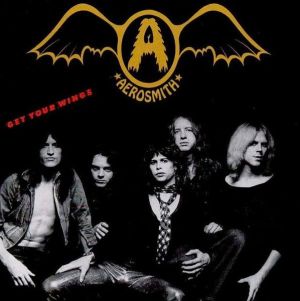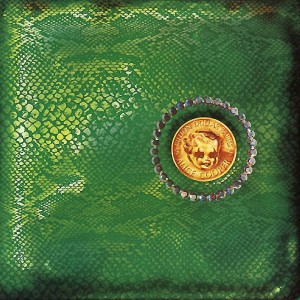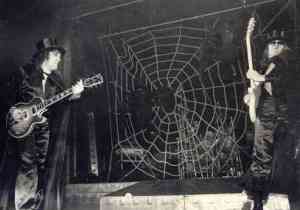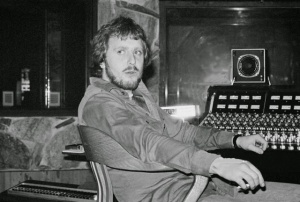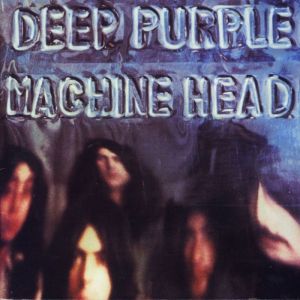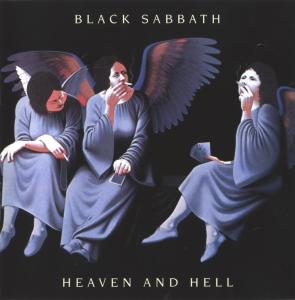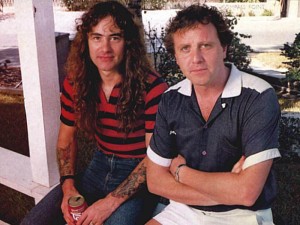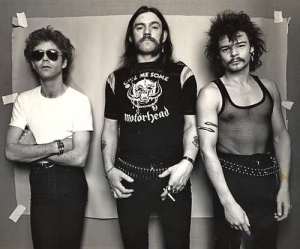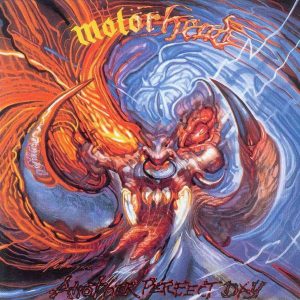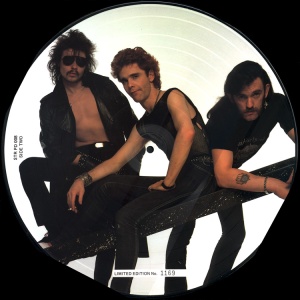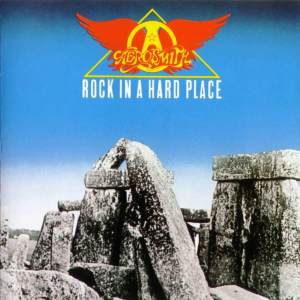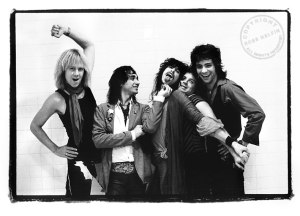Ever ponder the giant leap from the weed-fueled garage band jam of Aerosmith’s 1973 debut and the polished, mature hard rock statement that is the ’74 follow-up, ‘Get Your Wings’? What happened? Was it the change in producers? ‘Aerosmith’ wasn’t so much produced as merely recorded, but on GYW, Jack Douglas polished the band’s sound and performances to the perfect mid-70s hard rock sheen. He brought in lots of help; the famed Brecker Brothers formed the core of a horn section for the GYW sessions, and songwriter/keyboardist Ray Colcord (who, as Columbia Records A&R, signed Aerosmith in 1972) added keys. But Aerosmith played Guitar music with a capitol G, and apparently Douglas found the Boston band’s two axemen somewhat lacking…
The executive producer on ‘Get Your Wings’ was Bob Ezrin. Ezrin was on a hot streak, having produced Alice Cooper’s first four albums for Warner Brothers, with the fourth, ‘Billion Dollar Babies’, having topped the Billboard charts at Numero Uno in 1973. In a few short years, Ezrin had transformed Alice Cooper the band, a psychedelic anti-music nightmare, into hard rock champions, with several hit singles and a Number 1 album. Anyone who has heard AC’s two pre-Ezrin albums for Straight Records knows exactly the caliber of miracle Ezrin performed with this bunch of wierdos. So then how was Ezrin able to take what was arguably the world’s worst band and morph them into chart-topping pop stars?
The common denominators to the amazing transformations of both Alice Cooper and Aerosmith were session guitarists Steve Hunter and Dick Wagner. Yes, AC had already had a hit in 1970 with ‘I’m Eighteen’, but by ’73, alcoholism had rendered guitarist Glen Buxton pretty much useless, and Ezrin needed to bring in session musicians to bolster the playing on BDB. It was a tactic Ezrin had used before; Rick Derringer played lead guitar on ‘Under My Wheels’ from ‘Killer’, and Wagner had played the outstanding solo on ‘My Stars’ from the ‘School’s Out’ album. Ezrin had a vision for Alice Cooper’s music, and Wagner and guitarist Steve Hunter were called in to work on ‘Billion Dollar Babies’. They were each paid $90 per song.
A hundred-or-so gigs had no doubt honed Aerosmith’s chops between first and second albums, and the writing had progressed nicely as well, but in the studio, Jack Douglas still found them wanting. Douglas was an engineer on ‘BDB’, and had worked with Hunter & Wagner before hooking up with ‘Smith, so when the sessions ran into guitar trouble, both men got the call. As far as the specific reason that session players were utilized for GYW, Douglas himself has never addressed the issue, nor have the members of Aerosmith, who neither confirm nor deny what has been an ‘open secret’ for decades. Wagner has said that he was called in because “Obviously for some reason he (Joe Perry) wasn’t there to do it and I never really questioned it.” Whatever the reason, the end result is the guitars on GTW are played with a command and authority that’s utterly absent on the band’s first album.
So: Who are these guys, anyway? Both natives of the Detroit area, H&W cut their teeth in bands on the club circuit; Hunter with Mitch Ryder and the Detroit Wheels, and Wagner with his own band, The Frost. Wagner then formed Ursa Major, who at one point included Billy Joel on keyboards, and cut one album for RCA (Note: I highly recommend this album!). After the guitarist worked on ‘School’s Out’ in ’72, Ezrin produced Lou Reed’s ‘Berlin’, and Wagner was invited put together a band for the European ‘Berlin’ tour. Wagner recruited Colcord and Steve Hunter for the touring band, which appeared on Lou Reed’s ‘Rock n Roll Animal’ live album. Both guitarists are given full credit for their contributions. Which brings us back to ‘Billion Dollar Babies’ in ’73 and ‘Get Your Wings’ in ’74.
Neither guitarist was credited on BDB or GYW, but the truth about who played what on these two records has gradually established itself over the years. I’m sorry to report that it’s now an acknowledged fact that Steve Hunter played the solos on the first half of Aerosmith’s version of ‘Train Kept a’Rollin’… And Dick Wagner played the solos on the second (‘live’) half. So yes, boys and girls, it’s true: that ain’t Perry or Whitford you’ve been air guitaring to for 40 years. Perry and Whitford would obviously quickly evolved into great guitarists in their own right, but the soloing on this song formed the basis of their reputations as players when I was a kid… Wagner also played the solo in ‘Same Old Song and Dance’. This is as yet unconfirmed, but take a close listen to ‘Spaced’, specifically those lightning-fast neo-classical ascending/descending flourishes near the end; methinks that’s either H or W as well.
Wagner plays uncredited guitar all over ‘Billion Dollar Babies’, but also co-wrote ‘I Love the Dead’, and was not credited. Hunter played uncredited on the title track, ‘Hello, Hurray’, ‘Raped and Freezin’, ‘Sick Things’, and ‘Generation Landslide’ (so basically, the entire record). Wagner would also play on AC’s next album, ‘Muscle of Love’, and when Alice went solo, Wagner would receive official credit for his work on all subsequent AC albums. Wagner would, in fact, become a valued member of the Cooper camp as a songwriter; the Cooper-Wagner songwriting team would write 7 out of 9 of Cooper’s Top 10 hit singles. Hopefully his pay rate went up a bit.
In early 1976, during sessions for the fourth KISS studio album, ‘Destroyer’, Ezrin brought in his favorite ringer again; this time Wagner subbed for the absent (in more ways than one) Ace Frehley, laying down guitar solos on Sweet Pain and ‘Faming Youth’. Wagner also tracked acoustic guitar for ‘Beth’ and Great Expectations’. ‘Beth’ hit #7 later in the year, the album reached #11. Ezrin’s masterplan to tailor an album the band’s image had worked; not only did the kitchen sink production compliment the band’s grand vision, but he also famously pushed the members of KISS to new heights as musicians… And when someone wasn’t capable of hitting those heights, Ezrin knew someone who was.
Wagner continued working with Alice as a songwriter and guitarist until 1983’s ‘DaDa’. He published an autobiography called ‘Not Only Women Bleed’, and if you’re interested in recording session minutiae and behind the scenes dirt, it’s essential. Sadly, we lost Dick Wagner in July of 2014 after several years of major health issues. Steve Hunter’s most notable session outside of the Reed/Cooper/Aerosmith triangle was for Peter Gabriel’s ‘Solsbury Hill’. Hunter is still playing and recording, and released an album called ‘The Manhattan Blues Project’ in 2011, which featured several famous guests… including Aerosmith’s Joe Perry!
There are two places to go to hear the Hunter & Wagner duo playing together in their prime: Lou Reed’s ‘Rock n Roll Animal’ live album, and the 1975 Alice Cooper ‘Welcome to my Nightmare’ TV Special, which features an awesome guitar duel between the two, is out there on DVD. The ‘Nightmare’ special is interesting, because it highlights a key Reed/Cooper connection: The band assembled by Wagner and heard on Reed’s ‘RnR Animal’ album consisted of Hunter, Wagner, Ray Colcord, and Prakash John and Pentti Glan, and eventually became Alice Cooper’s backing band for the ‘Welcome to my Nightmare’ album, tour, and TV special.
So: There’s your answer to a trivia question no one will ever ask… Q: What do Lou Reed, Alice Cooper, and Aerosmith all have in common? A: Hunter & Wagner.
And Ray Colcord.
